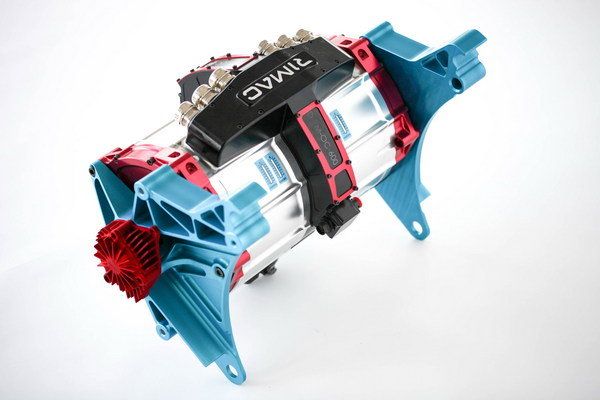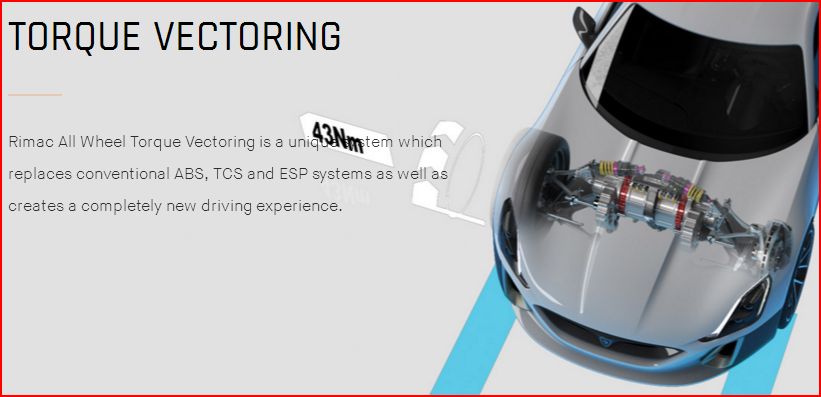marta said:
charge said:
One slight variation of this concept (OK, not the same as being "in the wheel", but bear with me): You could do without a differential completely and run 2 motors total, one on each half-shaft. The turning differential action would be commanded on each wheel by the computer or other local sensing device.
You could use UQM's controlled motors interfaced to one another for AWD or 2WD systems, with steering and slip sensing.
What would the advantage of 2 smaller motors (one on each half shaft) be? Vs just one large electric motor with a differential...
.
DucRider said:
More precise control of the the power delivered to each wheel.........................It features the Rimac All Wheel Torque Vector Vectoring system, which can vary the torque on each wheel depending on the steering angle, speed, longitudinal and lateral forces, yaw-rates, and several other variables.
http://www.topspeed.com/cars/rimac-automobile/2015-tajima-rimac-e-runner-concept_one-ar169695.html
More precise control, more directly commanded control.
Anti-skid stability control on modern cars works on the same sensor inputs DucRider described for the Rimac. New cars are demanding in performance these days.
Also, each of the two motors can be smaller and cheaper individually than one big motor since you only need about half-power going thru each motor.
Differentials are heavy and we'd be glad to
not have one.
Being smaller motors means they lie flatter and lower beneath a trunk or load floor.
Being smaller motors means they have less rotational inertia (respond quicker).
In addition, it avoids using braking commands to do traction control and anti-skid (yaw) control as most cars do now with differentials.
DucRider, I didn't know about the Rimac system, as I've spent my years doing Aero Engineering with software/mechanical off and on, so thanks for the reference. Here is a picture of the two-motor (one on each half-shaft) system, which Rimac claims saves space and weight.
Granted a single motor plus one differential would be cheaper overall (even though each smaller motor is cheaper than a bigger motor). There is a lot of emphasis on weight, space, and performance in Stability Control (anti-skid, yaw control), so it might be a decent approach for a passenger vehicle.















